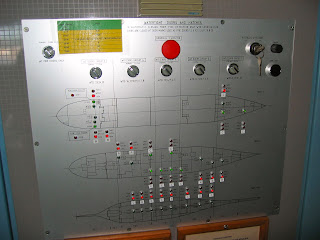We went to the Coco Walk Mall for the 10:30 AM showtime. It's a good thing that we went to a showing that early because the movie has a running time of 165 minutes. That's quite a time commitment for those of us who really can't afford to be late getting back to the ship. We had no reason to worry as the same cabbie who dropped us off agreed to pick us up again after the show to get us back downtown. With five of us splitting the cab ride ($10 each round trip) it wasn't all that expensive. $19 total for movie and transportation. We even had time to grab a late lunch at the New York Bagel Company afterwards before heading back to the ship.
I really enjoyed the movie. Directed by Christopher Nolan of Inception fame, this film was an epic conclusion to the trilogy that he started with Batman Begins and The Dark Knight. While the Oscar winning performance by Heath Leger of "The Joker" from TDK certainly set the bar very high for this the TDKR villain, Bane was up to the challenge. A powerful and sinister villain who was unyielding in his barbaric quest to bring about the downfall of Gotham City. Plus, he totally reminds me of Lord Humongous from the cult classic The Road Warrior…so…extra points for that.
Nolan did a spectacular job of keeping TDKR in the spirit of the previous two films while at the same time paying clever homage to previous Batman interpretations. This latest film continues the gritty spirit of the others in the Nolan trilogy with dark lighting, lots of shades of grey and black in the set and costume design, and continues the overall utilitarian feel to Gotham City. Ian pointed out that at one point in the movie, Bane comments on a young boy performing "The Star Spangled Banner" as having "a wonderful singing voice." Jack Nicholson, in the original Batman movie, had a similar line when portraying the Joker. That was a nice tie in.
The movie also draws direct inspiration from a set of graphic novels called Knight Fall in which Batman's battle with Bane depicts Bruce Wayne's eventual end as Batman and protector of Gotham. In fact, it seems that some of the fight scenes between Batman and Bane are storyboarded directly from the Knight Fall comics. Very cool.
Another thing I like about Nolan's interpretation of Batman is the human aspect of the "superhero" myth. Faithful to the spirit of the comics, Nolan portrays Batman as what he is: a man with a painful childhood, passion for justice, and love for a city and humanity. That's it. He's just a man. An athletic man with plenty of money, assets, and cool gadgets to be sure. But in the end, he's only a man. He's not Superman. He doesn't have super strength, x-ray vision, or any other type of "super" power. Nolan holds true to this by not having Batman perform acts that are too far out of bounds from a highly athletic and intelligent person. In short, he can't leap tall buildings in a single bound because we can't. In fact, this version of Batman (played extraordinarily well by Christian Bale) is the most human yet, in my opinion.
Nolan's direction of action sequences also relates to this portrayal of true-to-life hero. The fight scenes are about as unidealized as I've seen in modern film. When Batman is engaged in hand to hand combat (which is most of the time because he doesn't believe in guns or killing his enemies) the camera work is decidedly still.
A popular technique when filming fight scenes is to shoot the footage from many different angles. In post production the scenes are cut together with audience perspective changing very quickly, sometimes more than once per second. This does a couple of things. One, it makes the fights seem to have more speed and excitement than they normally would. Also, it hides the limitations of the actors/stunt personnel, as they try to portray extreme fight sequences using moves not normally performed by humans. Basically, it allows heroes and villains to perform superhuman fight scenes, without actually having to perform them due to the fact that the audience never gets to see more than one second of action per camera shot (see movies like The Borne Identity, Salt, Casino Royale for examples of this technique).
Bourne fight scenes (the first 30 seconds tells the story):
In the spirit of keeping Batman and Bane human characters, Nolan avoids this technique. Fight scenes are shot using very limited camera editing. The characters are shown from one angle fighting each other for long periods of time. The effect is quite arresting and different from other movies. It makes it seem realistic, or at least, more realistic than other action flicks. Neither of them are performing acrobatics that are incredibly unrealistic. They are basically just brawling. I like it and think that it speaks to Nolan's attempt to create a human heroes and villains, not a superhero/supervillains, in Batman and Bane respectively.
I also liked the music during the movie. Often times, I find that movie scores get in the way of the storytelling. However, I didn't find that with TDKR. Bane (the villain) has a theme, but, it's not overused so it's quite effective when heard. Also, there is great use of silence in this movie. Sometimes, it's better not to have any music at all...just watch The Wire for examples of this.
Overall, I thought the movie was terrific. Definitely something to see on the big screen and, given the opportunity, a movie that I would definitely see more than once.
































